Table of Contents
- Home
- »
- Content Marketing
- »
- How to Become a Thought Leader on LinkedIn in 2024
-
Wordbrew
- 6 minutes read time
How to Become a Thought Leader on LinkedIn in 2024
- Home
- »
- Content Marketing
- »
- How to Become a Thought Leader on LinkedIn in 2024
How to Become a Thought Leader on LinkedIn in 2024
Table of Contents
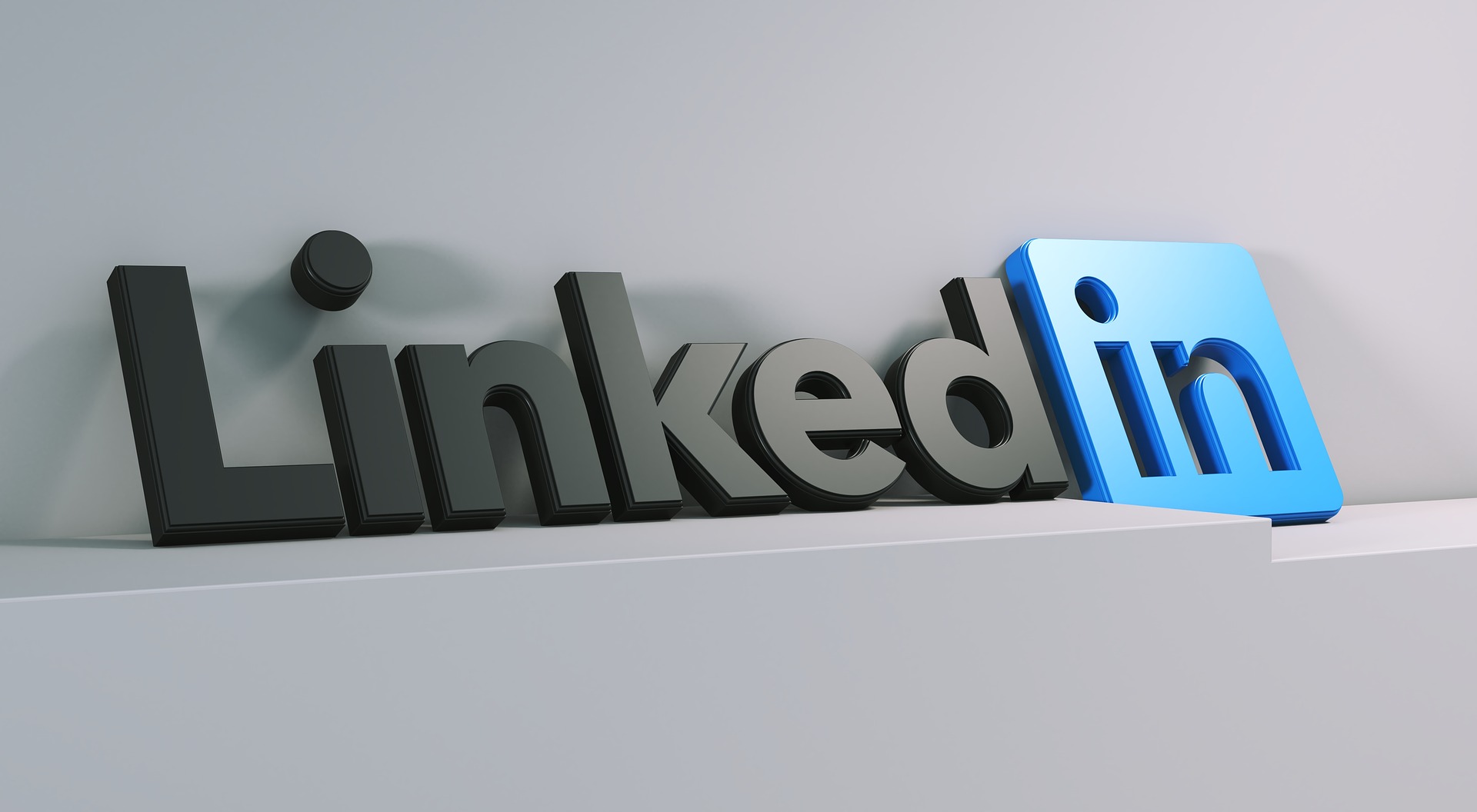
Being a thought leader can 14x your ROI, according to research conducted on Fortune 100 executives. It’s even more vital for B2B businesses, as another study showed that up to 49% of buyers consider thought leaders’ perspectives before making a purchase decision.
With its 900 million users worldwide, LinkedIn has now grown to become the de facto platform of choice for thought leaders like Gary Vaynerchuk (Entrepreneurship), Simon Sinek (Leadership) & Neil deGrasse Tyson (Science). But even then, the ceiling for growth in this area is yet to be seen.
Let’s dive into the steps leaders can take to leverage LinkedIn for thought leadership and build their authority on the platform.
What are the guidelines for thought leadership in 2024?
As the platform continues to grow, younger generations, such as Gen Z, are starting to use LinkedIn more frequently with recent data showing that 17% of LinkedIn users in the United States are between the ages of 18 to 29. Winning over this outspoken, information-rich generation requires finesse and quality content that they will trust.
Enter Google’s EEAT (Experience, Expertise, Authoritativeness, and Trust) guidelines.
Introduced nearly a decade ago, they served as guiding lights for Google to determine the quality of content. These same principles apply to content on platforms such as LinkedIn, as they mirror the evaluation criteria of consumers. Therefore, it’s essential to prioritize building a brand that is both authoritative and trustworthy.
How to Use LinkedIn to Become a Thought Leader
While there are many ways you can use LinkedIn to become a thought leader, we have curated 8 of the best tips you can start with.
Tip 1: Quit doing everything for everyone
Before you even get started, identify your target audience. The sheer number of LinkedIn users makes it impossible to create content for everyone. Picking a niche is therefore essential to ensure that your content reaches the right audience.
Then comes the tough part — sticking to it. Creating consistent content for your niche helps build authority, creating recognition and elevating your reputation as a subject matter expert.
A great example is Ali Abdaal, a YouTuber and podcaster with 73k followers on LinkedIn. He consistently posts content on LinkedIn about building a YouTube channel. To keep things exciting, he utilizes the breadth of formats available, be they short-form videos, carousel posts, or link posts to his channel.
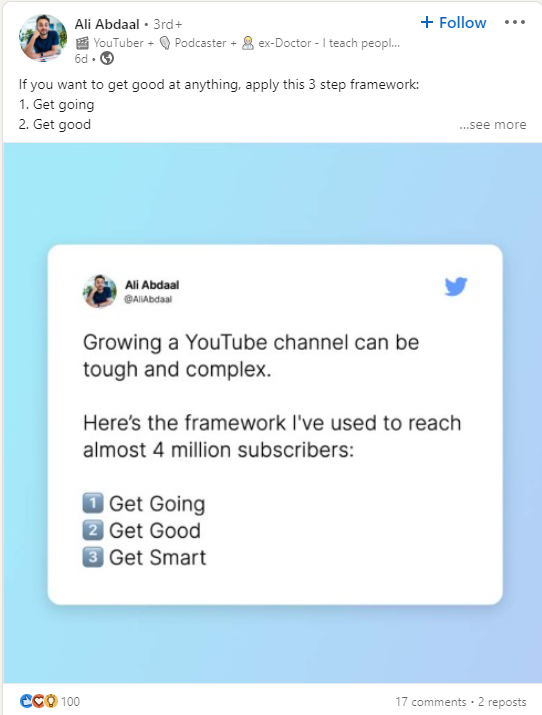
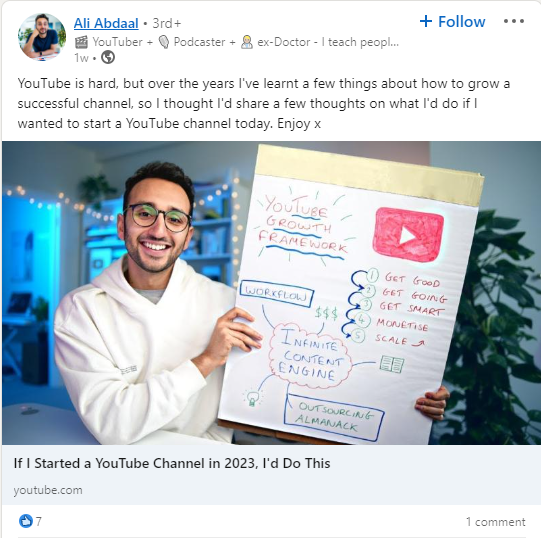
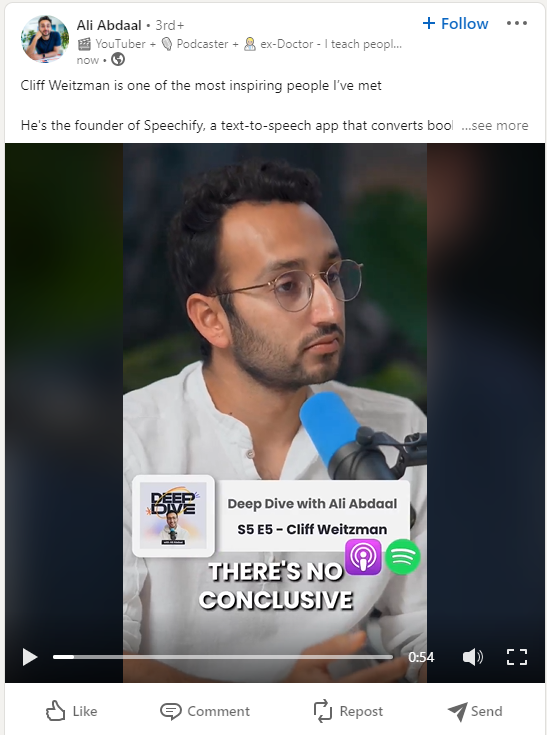
Suggested reading: Harnessing Executive Thought Leadership
Tip 2: Don’t make your content too robotic
When building your thought leadership content on LinkedIn, you don’t have to be dry and impersonal. Sharing personal experiences related to your niche is one way to inject personality into your content.
It helps foster a connection with your audience through relatable content –– building trust in the process. And don’t worry if you don’t think your experiences are particularly fascinating –– sometimes, even mundane stories can be the most relatable!
Software company Chili Piper is a sound example of this. They frequently hand over control to their staff, adding a personal touch to their brand page. This has allowed Chili Piper to showcase its team’s individual personalities and expertise, creating a more relatable and engaging brand presence on the platform.

Tip 3: Share. Don’t sell.
Not every post on LinkedIn needs to be a sales pitch.
Instead, focus on sharing valuable information and educating your audience. Show that you are genuinely interested in the success of others. After all, the ‘pie’ is big enough for all of us.
Included among the items you could share are playbooks, tools, processes, or any other information that could be valuable to your audience. This is also a great way to build relationships with your audience and establish trust.
Tip 4: Optimize your LinkedIn profile
An often overlooked component of personal branding is your own personal profile. While your content may attract consumers, your profile will be their go-to source to learn more about you. And ultimately, what your profile says will significantly impact how authoritative and trustworthy you appear.
What this means? Optimizing your LinkedIn profile is a must. You should have a professional profile picture and your entire profile needs to be up-to-date with news and company updates while reflecting your unique value proposition.
Tip 5: Add your own flair
As cliché as it is, everyone is unique. Let that show.
The key is experimentation. Try out the different formats to see what works best for you and your audience.
The importance of creating content you enjoy is often understated. When you create content you’re passionate about, you add a personal touch that no one else can. The end result is that your experience and expertise shine through, helping you build trust with your audience.
It’s also worth noting that you don’t have to limit yourself to creating content specifically for LinkedIn. For instance, if you have a personal blog or a podcast, consider repurposing that for LinkedIn. This allows you to maximize your reach across multiple channels efficiently.
Tip 6: Engage with your community
Aside from just creating great content, actively engaging with your audience is crucial to building authority and trust on LinkedIn.
The best ways to engage with them are by responding to comments and messages, asking questions, and participating in conversations. Not only does this build better relationships with your audience, but it also increases the visibility of your posts, as LinkedIn’s algorithm favors posts with higher engagement. Engagement begets engagement –– just like a snowball.
If you want to go the extra mile, actively seek out and engage with thought leaders and influencers in your niche –– commenting on their posts, and sharing their content. The benefits of this approach are twofold: boosting brand authority while building valuable connections and partnerships.
Who better to illustrate the importance of engaging than Richard Branson, the billionaire owner and founder of Virgin Group? In the examples below, we see him responding to comments on his post as well as comments on posts from his peers.
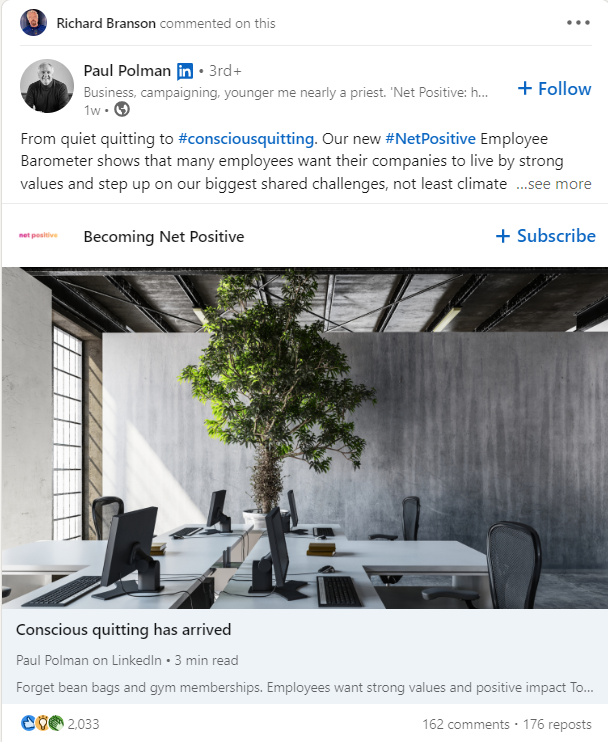
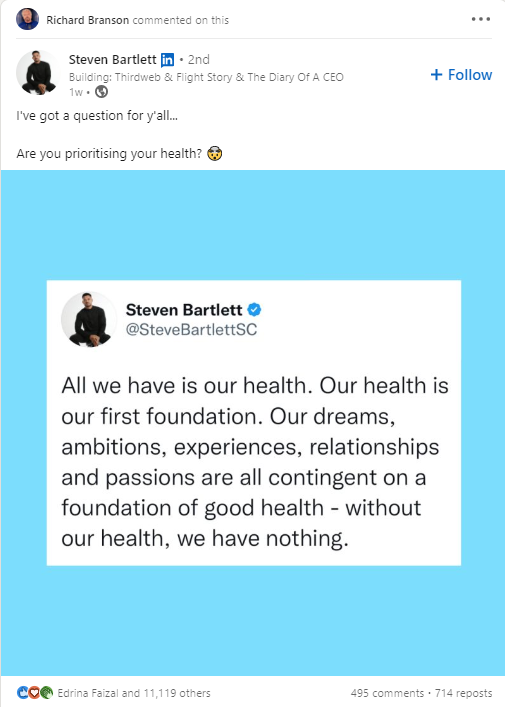

Tip 7: Collaborate with other thought leaders
Collaborating with other thought leaders is a great way to expand your reach and gain new followers on LinkedIn. It provides you with the opportunity to tap into their existing audience and get your message in front of new eyes.
This can be done in many ways, such as co-authoring blog posts or articles, creating a joint webinar or podcast, or even cross-promoting each other’s content on social media.
Not only does this collaboration provide mutual benefit, but it also adds diversity to your content and helps to keep it fresh and engaging.
Tip 8: Review your content performance using LinkedIn analytics
LinkedIn’s built-in analytics tool, called LinkedIn Page Analytics, provides valuable insights into the performance of your content, such as views, engagement, and demographics of your audience. By analyzing this data, you can determine which types of content resonate with your audience and adjust your content plan accordingly.
Other tools like Factors also allow users to analyze how Linkedin thought leadership contributes to their overall content strategy.
Aside from the performance analytics, it also pays to read through and understand the comments your readers leave on your content, especially top-performing content. User comments are a great way to identify important topics related to your content that users are interested in learning about.
An example of which is from Keir Finlow-Bates. In a post he made on entrepreneurship failures, a question in the comments gave inspiration for the next day’s post.
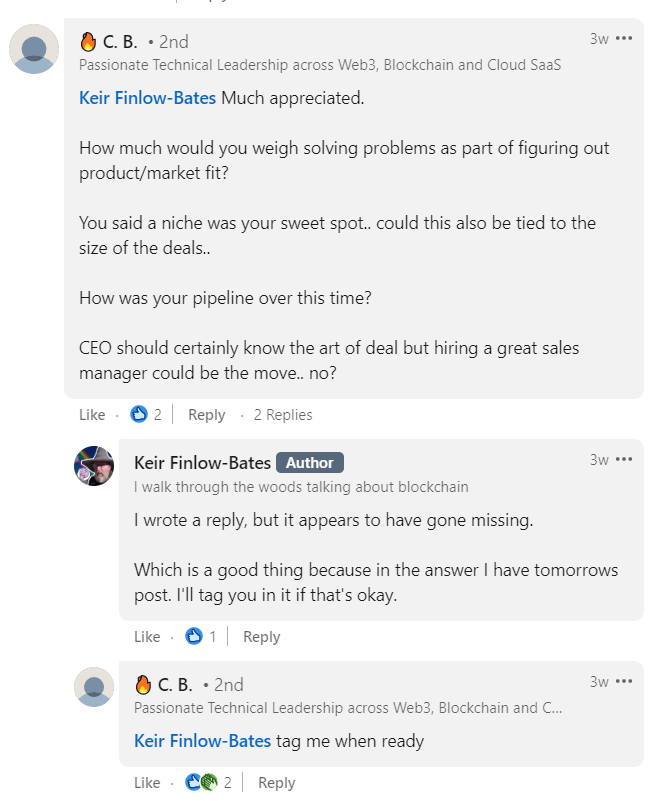
Need help finding your voice on LinkedIn?
Becoming a thought leader on LinkedIn takes time, patience, and a lot of hard work. However, with these tips, you can build your personal brand and establish yourself as an authority in your niche.
If you’re struggling to find your voice on LinkedIn or need help creating high-quality thought leadership content, contact Wizeo today and let us build your brand into a LinkedIn thought leader.
FAQs
- How do you demonstrate thought leadership on LinkedIn?
Demonstrating thought leadership on LinkedIn involves consistently sharing high-quality, valuable content showcasing your industry expertise. This content can take various forms, including articles, videos, infographics, and more.
- What are some elements of thought leadership content?
Thought leadership content typically includes originality, insights, and industry knowledge. It should provide unique perspectives on a particular topic, based on data and proper research. Overall, thought leadership content should showcase expertise and establish the author as a trusted authority in the industry.